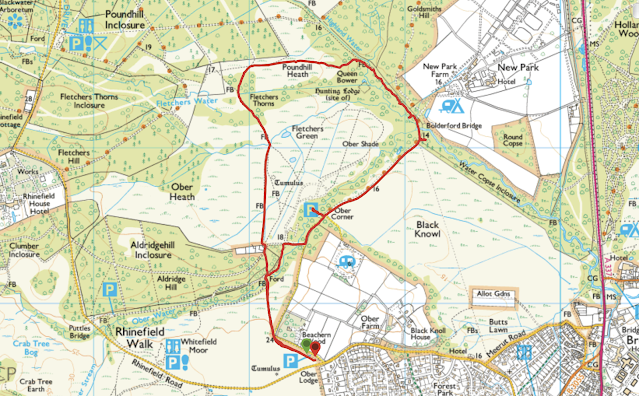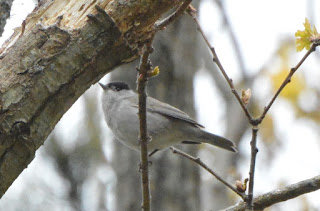 |
Martin Down © R. Smith |
After an unusually cold April and some dismal weather in May it was wonderful to have a warm, sunny day with barely a light breeze for the first full Lym Nats’ walk since February 2020!
Twelve, including several new faces, plus a leader met up at Martin Down for a general interest walk, although inevitably at this time of year the emphasis was going to be on butterflies and flowers. In spite of the late Spring, we were not disappointed. Even the Skylarks were rejoicing on such a beautiful day, for their songs from above were in the background throughout our walk.
Martin Down is a National Nature Reserve that has on its western side the Bokerley Ditch, a long meandering Iron Age earthwork that nowadays marks the Hampshire/Dorset border. It was along the eastern bank we walked initially, passing scrub where patches of Germander Speedwell matched the blue of the sky and Thyme-leaved Sandwort grew on the ant-hills that dotted the landscape in that part of the down. Salad Burnet and Cowslips grew everywhere, although the latter were now past their best. Dropwort, the downland Meadow Sweet, was still quite short and in bud so perhaps easily overlooked for it bore a passing resemblance to Salad Burnet at this stage.
 |
| Small Copper © R Coomber |
 |
| Marsh Fritillary © R Coomber |
Our first butterflies were Brimstone, Orange-tip, Marsh Fritillary, Brown Argus, Dingy Skipper and Small Copper. We encountered the blue form of female Common Blue before leaving the ditch area to walk across to the flat ‘fields’ of the World War II rifle butts area, where we enjoyed marvellous views of a Green Hairstreak resting on the new growth of Dogwood. Nearby another Marsh Fritillary also provided perfect opportunities for the photographers in the party.
 |
| Female Common Blue © R Smith |
 |
| Green Hairstreak © R Coomber |
Patches of Chalk Milkwort grew, with some being pink or white plants in addition to the more usual blue. Here and there the first flowers of the yellow Common Rock-rose reflected the morning’s sunshine, or perhaps the male Yellowhammers we were seeing during the walk. It will be a while before Marjoram flowers, but one could smell the herb wherever leaves had been crushed along the path.
 |
| Corn Bunting © C Robinson |
One of the hoped-for birds was Corn Bunting and we were not disappointed, although we might have wished for better views. This is one of a number for farmland species, that along with the migratory Turtle Dove, is in decline as a victim of intensive agriculture. Martin Down supports both species, although today’s walk didn’t visit the area favoured by the doves.
Time was running away from us, so we decided to abandon the clock and continued to walk the side of the ditch before looping round to a track that led us by two tumuli, where another unusual plant grew – Pasqueflower (Pasque = paschal = Easter). This year the flowers had still been showing well just a week ago, but unfortunately were now going over. This is probably the most south-westerly site for Pasqueflower for its main strongholds are in the Cotswolds and the Chilterns. Although known to favour ancient earthworks in areas where it occurs, it was only discovered here in 1983 and it is possible that it might have been introduced.
 |
| Grizzled Skipper © C Robinson |
 |
| Dingy Skipper © R Coomber |
With homage paid to another rarity we headed back towards the car park, finding a number of large puffballs identified by Richard Smith as Mosaic Puffball, several flighty Grizzled Skippers and some 30+ stunted Green-winged Orchids. The final butterfly, seen by Brian and others, was a Speckled Wood amongst the bushes lining the path near the car park.
 |
| Mosaic Puffball © R Smith |
As we all had brought picnics we migrated to a sunny slope for lunch, before heading for home or returning to the field. It was a great start to our season of scheduled walks and thanks everyone for coming. RC
 |
©Crown copyright 2021 Ordnance Survey. Media 008/21 |
GPX
















